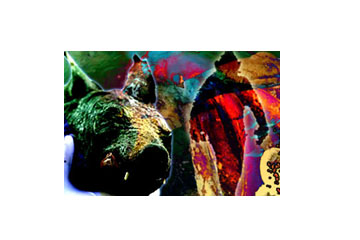Trial Begins for Witchcraft Torture Killing

A man named Eric Bikubi is on trial for the torture death of Kristy Bamu, a 15-year-old boy who Bikubi believed was practicing witchcraft.
Magalie Bamu, Kristy's sister and Bikubi’s girlfriend, is charged as an accomplice. The pair is accused of beating Kristy and two of his siblings with sticks, a hammer, metal bars and other tools in their London, England, apartment on Christmas day in 2010. Prosecutor Brian Altman said, "They beat them, refusing to let them eat, drink or sleep for days while the punishments being meted out became increasingly violent, with them using many implements found in the [apartment] as weapons of torture."
The trouble allegedly began when Bikubi accused Kristy, Magalie Bamu and another sister of being witches; the three confessed after Bikubi threatened and beat them. Magalie Bamu reportedly later turned on her brother and further implicated him, focusing the beatings on Kristy alone. After days of torturing the boy so badly that Kristy begged to be killed, Bikubi finally held the boy’s head in a bathtub of water to elicit more information about his sorcery activities. The further confession never came; Kristy died from drowning and other injuries.
The horrific incident has parallels with the historic witch hunts throughout Europe and North America, including the tortured confessions, dunking the suspected witch under water, and friends and family eventually turning on each other.
Though the killing occurred in Europe, all involved were from the Democratic Republic of Congo, where belief in magic and witchcraft is common. A 2010 Gallup poll found that belief in magic is widespread throughout sub-Saharan Africa, with over half of respondents saying they personally believe in witchcraft. Studies in 18 countries showed belief varies widely (ranging from 15 percent in Uganda to 95 percent in the Ivory Coast), but on average, 55 percent of people polled believe in witchcraft.More concerning is that the practice of hunting and torturing witches is alive and well and claims hundreds of lives each year. Here are a few of the more gruesome recent examples:
- In 1999, more than 200 suspected witches were killed in rural Indonesia, and hundreds more were taken into police custody to be protected from angry mobs.
- In February 2003, 15 suspected witches were killed in southern Nigeria. According to Leo Igwe, head of the Nigerian Skeptics Society, "the killing of the suspected witches started after some members of the Christian Pentecostal churches accused their congregation's parents and relatives of allegedly practicing witchcraft and being responsible for poverty, diseases, business failure, infertility and other calamities. As a result some children attacked their parents and other relatives to elicit confessions for their alleged participation in witchcraft." Many were beaten with clubs until they confessed; others were killed outright.
- In 2008, a mob of hundreds killed nearly a dozen suspected witchesin Kenya. The victims were accused of casting magic spells that lowered the intelligence of the village's children. Some of the men and women were hacked to death with machetes; others had their throats slit before their bodies were burned.
- In East Africa, especially Tanzania, dozens of elderly women have been killed as suspected witches in recent years. The proof? Their red-rimmed eyes, which are actually the result of having spent years cooking over fires fueled by cow dung.
The latest news out of London is proof that the belief in magic and witchcraft is alive and well in 2012; the Middle Ages are still very much with us.
This story was provided by Life's Little Mysteries, a sister site to LiveScience. Follow Life's Little Mysteries on Twitter @llmysteries, then join us on Facebook.
Get the world’s most fascinating discoveries delivered straight to your inbox.
Benjamin Radford is deputy editor of Skeptical Inquirer science magazine and author of Scientific Paranormal Investigation: How to Solve Unexplained Mysteries. His Web site is www.BenjaminRadford.com.



